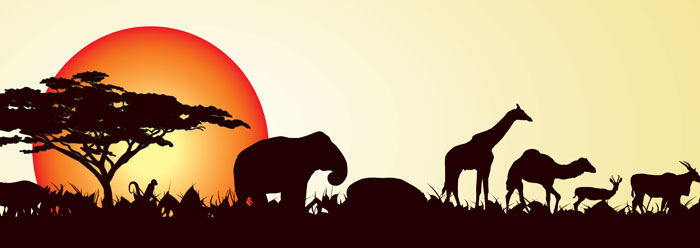Bible skeptics have long raised this objection to the Flood story. How could one man and his sons travel to all corners of the globe collecting all the pairs of animals to preserve them through the coming Flood? How did he even know about them? It's a serious question and deserves a careful answer.
First, it is necessary to note that Noah was not told to gather the animals. He was commanded only to build the Ark, large enough for all the animals, and simply receive the animals when they arrived. "And of every living thing of all flesh, . . . two of every sort shall come unto thee, to keep them alive" (Genesis 6:19-20).
Next, we recognize that the pre-Flood geography and environment was very different from that at present. Hints in Scripture intimate a worldwide habitable climate, confirmed by warm weather plants and animals fossilized in all parts of the globe, indicating that animals were not segregated into polar and desert zones, but were represented in all areas. Animals today are able to thrive in a variety of habitats. We suspect that the recently created, more robust specimens before the Flood were even more adaptable and had no reason to isolate. Very likely, all of these areas were possibly connected as a single continent, with no mountain or ocean barriers to hinder migration. Such varied zones resulted from the Flood and did not exist before.
Third, it has been noted that essentially all land animals possess a marvelous ability to sense imminent danger and migrate to avoid it. Many are the tales of unusual animal behavior and migration to safety in the hours before the recent Asian tsunami of December 2004. Likewise, large segments of the elk herd on Mount St. Helens all migrated to the mountain's south flank in the few days before the May 18, 1980, eruption, thus avoiding the northward directed blast. Some animals migrate yearly, but sometimes generations lapse between utilization of these migratory instincts. Often the animals knowingly migrate to areas where neither they nor their parents have ever been. Scientists rightly wonder how these skills originated. They seem to operate by a variety of mechanisms, from sun and star locations, to the magnetic field, to ocean currents, to magnetic imprinting. Understanding the operation of these abilities is mysterious enough, but where did they come from in the first place? No purely naturalistic source is satisfying.
The Flood story, however, is not merely natural, it involves the supernatural. The Creator was moving to preserve His creation. Might it not be appropriate to propose that, as the Flood was nearing, He instilled in a chosen pair of each "kind" a sense of impending doom and a desire to migrate to Noah and his Ark for preservation? All other representatives of their kind perished in the Flood, and all living representatives descended from the chosen pairs, inheriting the premonition and migration instincts.
There is no better explanation for the origin of these marvelous abilities. We can't know if this explanation is true, for the Creator hasn't told us the details. But at least there is a plausible answer. The naturalist has none.
Cite this article: Morris, J. 2005. How Did Noah Gather the Animals? Acts & Facts. 34 (9).













